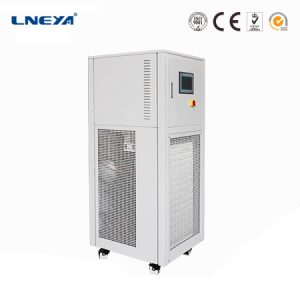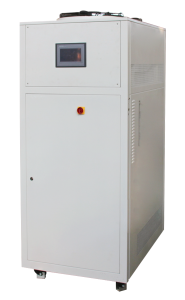Relationship Between Condensation Temperature And Condensation Temperature In Ultra Low Temperature
The chilling temperature of the ultra low temperature recirculating chillers refers to the temperature at which the state of the substance changes from a gaseous state to a liquid state under a certain pressure. Different substances have different condensation temperatures. For the same substance, changes in external pressure can also cause changes in the condensing temperature. The condensation temperature of the pure substance is a temperature point, and for the mixture, the boiling range elongation condensation is a temperature range. In general, as the outside air pressure increases, the condensing temperature also rises, and vice versa. In short, it is a function of matter, composition and pressure.
The level of condensation temperature depends mainly on the temperature and flow rate of the cooling medium, the condensation area and the form of the condenser. Reducing the condensing temperature can increase the refrigeration capacity of the compressor and reduce the power consumption, thereby increasing the refrigeration coefficient and improving the economics of operation. However, the condensing temperature should not be too low, otherwise it will affect the circulation of the refrigerant, and the cooling capacity will decrease. If the condensing temperature is too high, not only the cooling capacity will decrease, but also the power consumption will increase, and the exhaust temperature of the compressor will increase, the temperature of the lubricating oil will increase, and the viscosity will decrease.
There is also a certain correspondence between the condensation temperature of the ultra low temperature recirculating chiller and the condensing pressure. Therefore, the adjustment of the condensing temperature can also be achieved by adjusting the condensing pressure. When the temperature of the cooling medium (water or air) is constant, the adjustment of the condensing pressure can be achieved by changing the flow rate and the condensation area of the cooling medium. The flow rate of the cooling medium is increased, and the flow rate is correspondingly increased, the heat transfer temperature difference can be reduced, thereby reducing the condensation temperature; and increasing the heat transfer area can also achieve the purpose of reducing the condensation pressure.
Related recommendations
-
Hot and cold dynamic constant temperature control equipment cryopump installation points
1218The performance of each component in the cold and heat source dynamic constant temperature control equipment is different. We must make full use of each accessory to make the equipment run better. The cryopump is one of the main accessories, and i...
View details -
The Advantages Of The Industrial Chiller For Cascade Cryogenic Refrigeration System
1382Cascade cryogenic refrigeration system is a low-temperature refrigeration system which uses more than two refrigerants and combines them with heat exchangers (condenser evaporators) in more than two systems. For binary cascade refrigeration system...
View details -
The Importance of Electric Vehicle Battery Testing Chillers
1060The Importance of Electric Vehicle Battery Testing Chillers
View details -
Prospects for the development of electronic test thermal systems
871For the modern society, energy conservation and emission reduction is also an important task. In the development of semiconductor, chip, integrated circuit and other industries, the electronic test thermal system can effectively test its temperatu...
View details
 LNEYA Industrial Chillers Manufacturer Supplier
LNEYA Industrial Chillers Manufacturer Supplier












